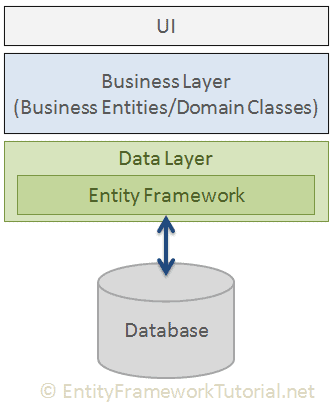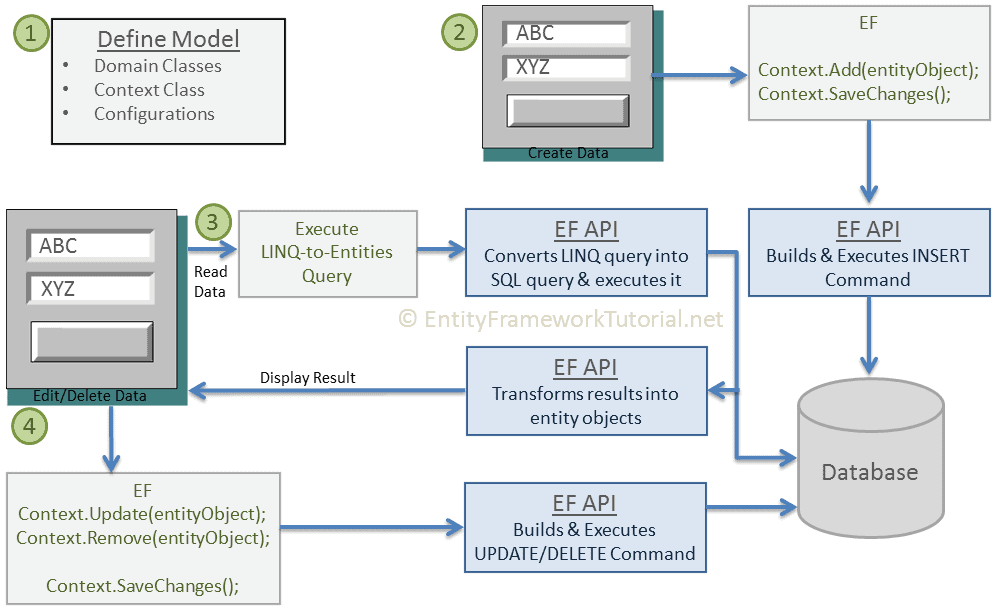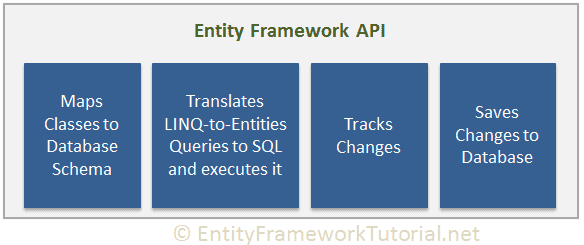Entity Framework .Net Core
Official Definition: “Entity Framework is an object-relational mapper (O/RM) that enables .NET developers to work with a database using .NET objects. It eliminates the need for most of the data-access code that developers usually need to write.”
The following figure illustrates where the Entity Framework fits into your application.

- Cross-platform: EF Core is a cross-platform framework which can run on Windows, Linux and Mac.
- Migrations: EF provides a set of migration commands that can be executed on the NuGet Package Manager Console or the Command Line Interface to create or manage underlying database Schema
Entity Framework Core Tools for the NuGet Package Manager Console in Visual Studio.
Enables these commonly used commands:
Add-Migration
Drop-Database
Get-DbContext
Scaffold-DbContext
Script-Migrations
Update-Database
EF 6 Version History
| EF Version | Release Year | .NET Framework |
|---|---|---|
| EF 6 | 2013 | .NET 4.0 & .NET 4.5, VS 2012 |
| EF 5 | 2012 | .NET 4.0, VS 2012 |
| EF 4.3 | 2011 | .NET 4.0, VS 2012 |
| EF 4.0 | 2010 | .NET 4.0, VS 2010 |
| EF 1.0 (or 3.5) | 2008 | .NET 3.5 SP1, VS 2008 |
Learn more about EF 6 versions history and its features here.
EF Core Version History
| EF Core Version | Release Date | .NET Framework |
|---|---|---|
| EF Core 2.0 | August 2017 | .NET Core 2.0, VS 2017 |
| EF Core 1.1 | November 2016 | .NET Core 1.1 |
| EF Core 1.0 | June 2016 | .NET Core 1.0 |

Here, you will see an overview of how entity framework works.
Entity Framework API (EF6 & EF Core) includes the ability to map domain (entity) classes to the database schema, translate & execute LINQ queries to SQL, track changes occurred on entities during their lifetime, and save changes to the database.


Comments
Post a Comment